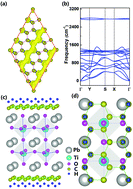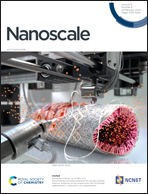Switchable metal-to-half-metal transition at the semi-hydrogenated graphene/ferroelectric interface†
Abstract
Tuning the half-metallicity of low-dimensional materials using an electric field is particularly appealing for spintronic applications but typically requires an ultra-high field, hampering practical applications. Interface engineering has been suggested as an alternative practical means to overcome this limitation and control the metal-to-half-metal transition. Here, we show from first-principles calculations that the polarization switching at the interface of semi-hydrogenated graphene (i.e., graphone) and a ferroelectric PbTiO3 layer can reversibly tune a metal to half-metal transition in graphone. Using a simple Hubbard model, this is rationalized using interface atomic orbital hybridization, which also reveals the origin of the high-quality screening of metallic graphone, preserving bulk-like stable ferroelectric polarization in the PbTiO3 film down to a thickness of two unit cells. These findings do not only open a new perspective on engineering half-metallicity at the interface of two-dimensional materials and ferroelectrics, but also identify graphone as a powerful atomically thin electrode, which holds great promise for the design of ultrafast and high integration density information-storage devices.



 Please wait while we load your content...
Please wait while we load your content...